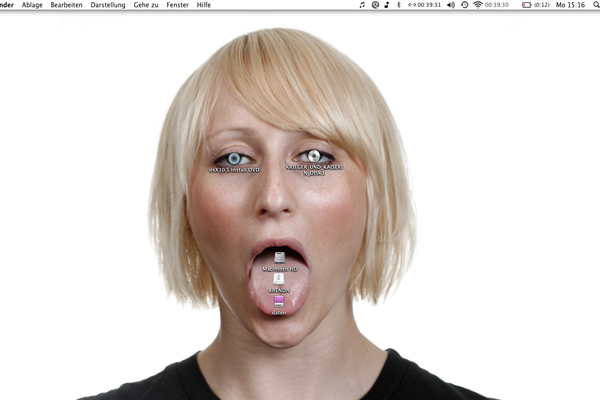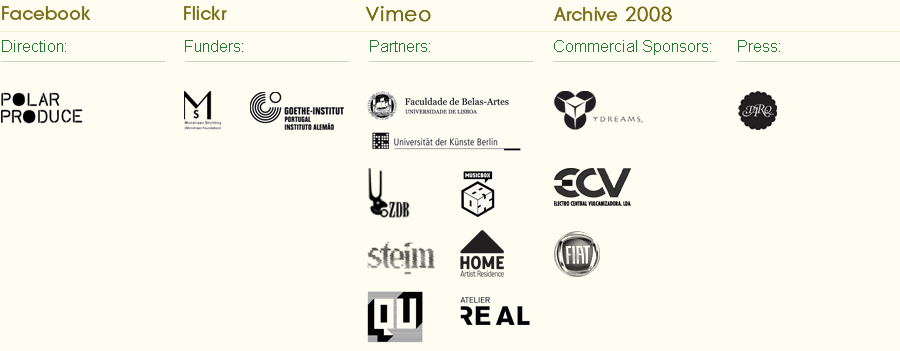
Sandra Dick and Lukas Hartmann, DE
Monitor Photography
Monitor Photography is a process that adapts the analogue principle of making a photogram to the computer and the screen. A classical photogram is made by placing objects directly on photosensitive paper and then exposing them briefly to light. Depending on the transparency of the objects, a photographic image of the shapes of the objects is the result. Where an object has casted a shadow, the photographic paper will stay white after being developed, where light has reached it, it turns black.
In Monitor Photography a comparable process is used. In the darkroom, a laptop computer is turned over so that it lies on it’s back. The screen is first turned off by the Monitor Photography software. A sheet of photosensitive paper is then placed on the computer’s screen, and the screen is turned on briefly. The light that is emitted from the screen in that short moment exposes the photosensitive paper, just like in a ususal blow-up process. After developing the paper, a “screenshot” of the actually displayed content of the screen can be seen on the photograph.
Monitor Photography is an example of what could be considered as ‘extended laptop’ technique. It subverts our everyday uses of the laptop by showing how it’s configuration and design can be repurposed for alternative uses.
About the artists:
Sandra Dick lives, studies and works in Berlin. Ever since the age of 16 she has been conducting research on photography. The first attempts were (of course) analog, staged photographs that were combining girlish items with shock effects. During studying visual communication at the University of Arts in Berlin her work began focusing on the analyzes of the habits of digital photography and behavior in the digital world but still retaining a subjective and feminine point of view . Such works include “Bild aufblasen” (2008), a short video showing Sandra “blowing up” a framed self-portrait – without using the photoshop filter. The “One-Color-Camera” (2009) is a device, which is manipulated in a way that it could only take pictures that only have above 50% of one of the RGB-colors. The latest “Monitor Photography” (2009) project, which will be shown at UM, extends this work, amplifying not only the automation of digital photography but also how its inbuilt properties further shape and influence our perception of the ‘realities’ we capture through digital photography processing.
Lukas F. Hartmann grew up in 8-bit land, figuring out how to program his ZX-81 while other children were beating themselves up in the neighboring rural towns. After freelancing several years as a games and web developer, he enrolled in Communications studies at the UdK Berlin, where he co-founded whacky Webby-Award winning startup aka-aki (2007) and created communication strategies for Hasso Plattner’s School of Design Thinking, sister of Stanford Institute of Design (2008). While studying at UdK in 2009, he started working with Sandra Dick, implementing a mixed media Mac application for her concept “monitor photography”. Currently, he is involved in international DIY/Hacking/Making festival Atoms&Bits and research in human factors of Twitter and Facebook.
Sandra Dick & Lukas Hartmann, Monitorphotography, DE, UM Exhibition, Opening Thur 12 Nov, 22hrs, ECV Fiat Garage (new space), Av. 24 de Julho, 60 [Santos], 1200-869. Exhibition runs to 27 Nov (Mon-Fri, 12-19hrs).





